-
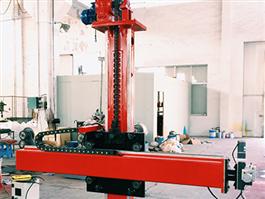 Welding Manipulator
Welding Manipulator
-
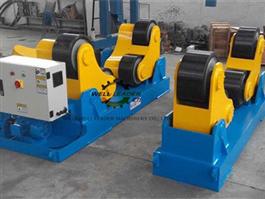 Welding Rotator
Welding Rotator
-
 Welding Positioner
Welding Positioner
-
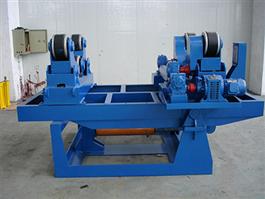 Customized Welding Solution
Customized Welding Solution
-
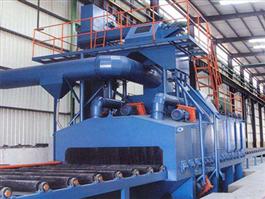 Plate Shot Blasting Machine
Plate Shot Blasting Machine
-
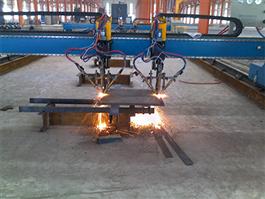 CNC Cutting Machine
CNC Cutting Machine
-
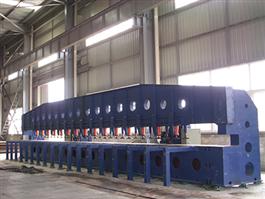 Edge Milling Machine
Edge Milling Machine
-
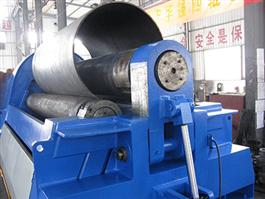 Plate Rolling Machine
Plate Rolling Machine
-
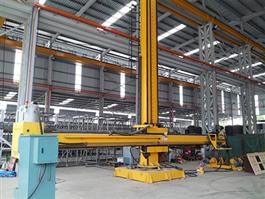 Welding Manipulator
Welding Manipulator
-
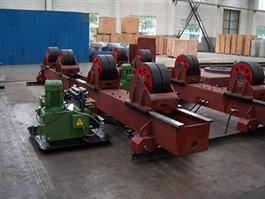 Fit-up Rotator
Fit-up Rotator
-
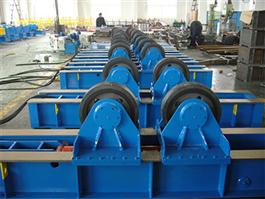 Fit-up Growing Line
Fit-up Growing Line
-
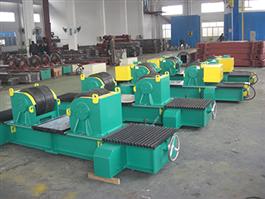 Sand Blasting Welding Rotator
Sand Blasting Welding Rotator
Initially used for nonferrous cutting operations, plasma developed into auseful means for cutting 2-D sheet and plate steel when the water-injectedplasma process was developed in the late 1960s. As technology developmentsimproved the edge quality, cutting speed, consumable parts life, and long-termoperating cost, it became competitive with other thermal cutting processes. Inrecent years, improved control technology has enabled plasma to be a contenderin the realm of 3-D cutting, making it an option for tube, pipe, and profiles.
Plasma’s versatility enables it to cut a variety of pipe diameters andthicknesses. In this system, a single power supply is connected to threetorches cutting three pipe sizes.
From its infancy in the 1960s,plasma cutting has progressed to become widely used in both machine-based andhand-held applications. Over the years technology improvements have led tobetter edge quality, faster cutting speed, longer consumable parts life, andlower long-term operating cost. These improvements have been applied primarilyto CNC machines that cut flat sheet and plate into precision components for avariety of industries.
Technology developments also haveopened the door to 3-D cutting. Virtually all of the technology applied to 2-Dcutting can be applied to tube and pipe for industries such as construction andenergy. While cut quality and overall plasma system performance are just asimportant for tube and pipe as they are for sheet and plate, the intricacies of3-D cutting require newer and better motion control technology. These motioncontrol capabilities were developed for the steel construction industry andcome in many forms—robots, conventional CNC tables equipped with rotary axes,portable pipe cutting and beveling machines for field use, and CNC machinesdesigned specifically for tube and pipe.
Plasma Improvements Condensed
Plasma cutting comes in twotypes: air plasma, which is the basic option, and high-definition, which usesgas mixtures to assist the cutting process.
Air Plasma Systems. In use sincethe mid-1980s, air plasma systems were developed primarily for hand-heldcutting applications. Over time the major manufacturers have improved theseportable cutting systems to the point that, equipped with a machine-mountabletorch, they are highly productive cutting tools for many shop-based andfield-based cutting.
Inverter technology has reducedpower supply size, and at the same time power supplies have improved inreliability, duty cycle, operating cost, cut quality, and cut speed. A typical85-amp air plasma system can pierce ¾-in. plate in 1.4 seconds, has a dutycycle of at least 60 percent, and operates on a variety of input voltages (200to 600 V, single- or three-phase). A typical weight is 75 pounds, so they areboth robust enough for day-in, day-out shop work and portable enough for fieldwork. Many have quick-change torches, so they can be changed frommachine-mounted to manually operated in a matter of seconds. The drawback isthat air plasma cutting systems can create some edge hardening on many steelsbecause of the nitrogen content in ambient air.
Typical uses of air plasmasystems in tube and pipe fabrication are:
· Portable pipe cutoff machines that, in addition to cutting round tube andpipe, can do weld prep bevels in one or two passes.
· Robotic workcells for nearly any 3-D cutting application. The latestsystems have a two- to six-wire CNC interface for easy integration and do notuse high-frequency or high-voltage starting technology, which initially plaguedrobotic systems. Specifically designed robotic torches further improvecapability and performance on 6-axis robotic applications.
· Purpose-built pipe and square tube cutting machines that cut to length,bevel, and cope.
· Small, low-cost, entry-level CNC machines with an optional rotary axisthat can cut to length, cope, and make other tube- and pipe-related cuts, suchas saddles. These usually are programmed as flat, 2-D cuts that the softwareadapts to 3-D cuts.
· Manual torches can be used for trimming or cutting, usually aided withguides or templates. They also can be used for low-powered plasma arc gougingto remove welds for rework.
High-Definition Plasma Systems.These are designed for shop use in mechanized applications only. These systemsare meant for 100 percent duty cycle in shops that need high productivity andaccurate, metallurgically pure cuts. Because high-definition plasma systems useoxygen as the plasma gas with compressed air as the shield gas, the cut edgehas minimal chemical- or heat-affected zones, maintaining the structuralintegrity of the base material. Cut quality on low-carbon steels is similar tothat on high-strength steels (HSS), and can be fine-tuned by adjusting thepower to match the material type and thickness; for example, 30 amps for thin materials,400 amps for piercing and cutting 2-in.-thick steel, and 800 amps to cut6.25-in.-thick stainless steel or aluminum.
High-definition plasma systemshave been in widespread use for flat plate cutting applications for nearly 20years, yet recent developments have resulted in better plasma-to-CNC machineintegration. This improved communication between the motion control device(whether robot, CNC cutting machine, or specialized tube cutting machine)simplifies the operator’s task, using PC-based control and CAM software to setgas flows, torch height, cut speeds, piercing technique, and other parameters.Further, hole quality with many of these integrated systems has improved to thepoint that bolt-quality holes can be made that meet many construction industryspecifications for roundness and smoothness. In many cases, the taper isminimal, eliminating the need for separate drilling or punching operations.
Typical shop uses forhigh-definition plasma systems for tube and pipe fabrication include:
· Cutting to length, beveling, and coping on a rotary axis, an option thatcan be added to many X-Y cutting tables. Some of the more complex machines canbevel up to 45 degrees automatically on any shape of tube or pipe.
· Purpose-built machines use robotic technology and software that take thedifficulty out of making complex cuts on hollow structural sections (HSS) andwide-flange sections. This conventionally has been a time-consuming processthat required skilled layout and cutting personnel.
· Custom robotic cells often are developed by system integrators andindustrial robotic manufacturers for precise, high-volume tube and pipecutting. These applications are common, but usually designed for particularhigh-volume jobs.



 Welding Manipulator
Welding Manipulator
 Welding Rotator
Welding Rotator
 Welding Positioner
Welding Positioner
 Plate Shot Blasting Machine
Plate Shot Blasting Machine
 Plate Rolling Machine
Plate Rolling Machine
 Welding Manipulator
Welding Manipulator